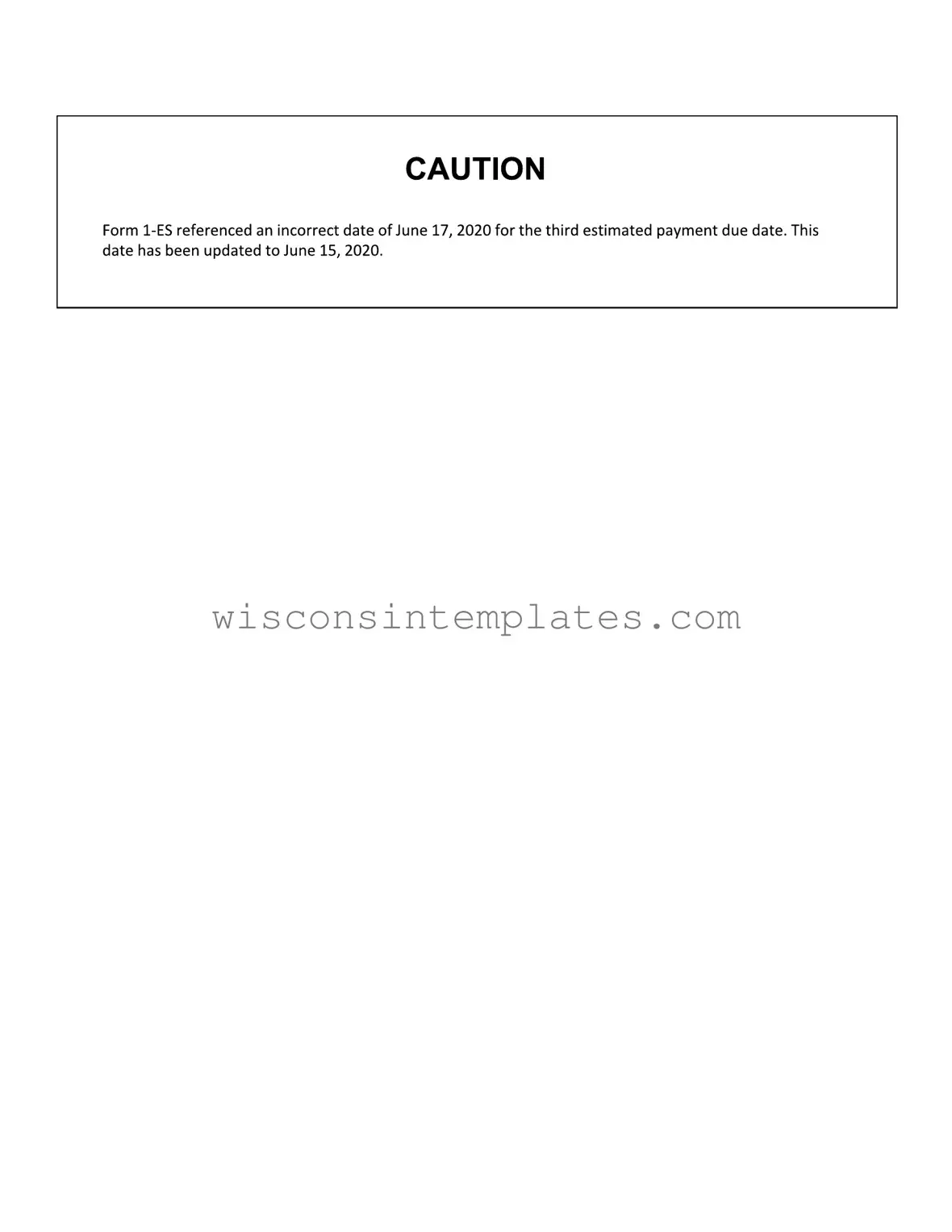The Wisconsin 1-ES form is an essential tool for individuals and trusts who need to make estimated income tax payments. This form helps ensure that your payments are processed correctly and on time. It’s important to use the personalized voucher provided at the bottom of the form, as this will automatically include your specific information, like your social security number or FEIN. Remember, filling out the form online is crucial; avoid printing a blank voucher to complete by hand. The form has specific due dates, including April 15, June 15, and September 15 of the tax year. If you are making an extension payment, be sure to use the correct year’s voucher—using the wrong year can lead to complications with your payment being credited incorrectly. Always send your payment to the address listed on the voucher, and do not attach any additional forms. By following these guidelines, you can ensure that your estimated tax payments are handled smoothly and efficiently.
